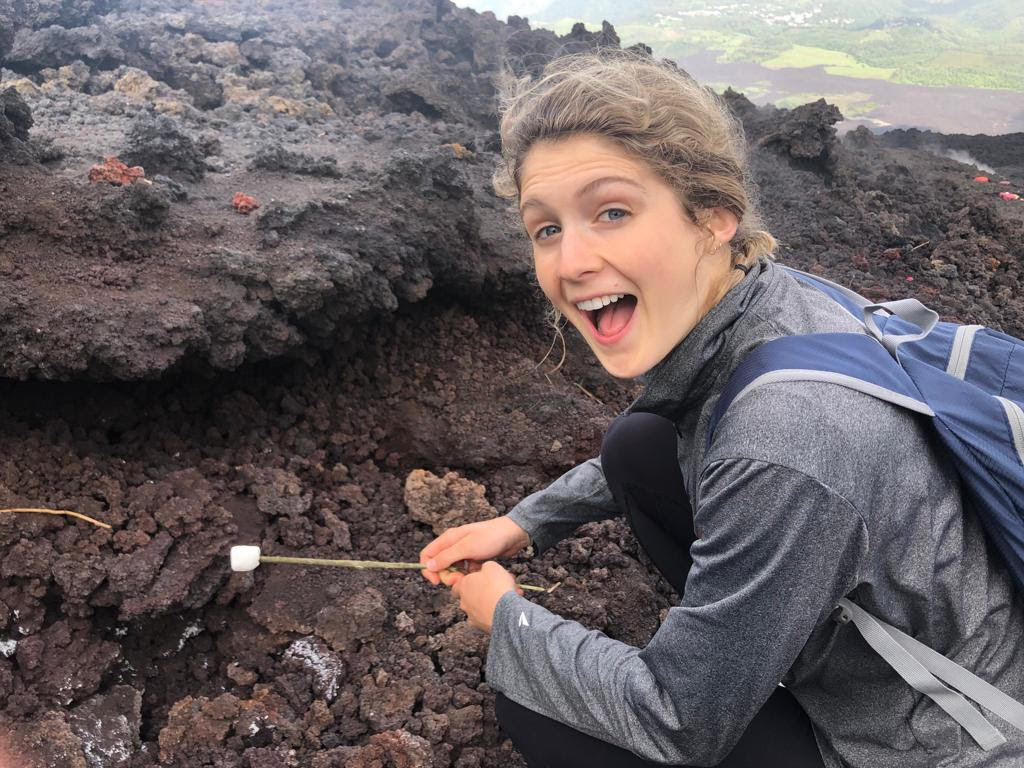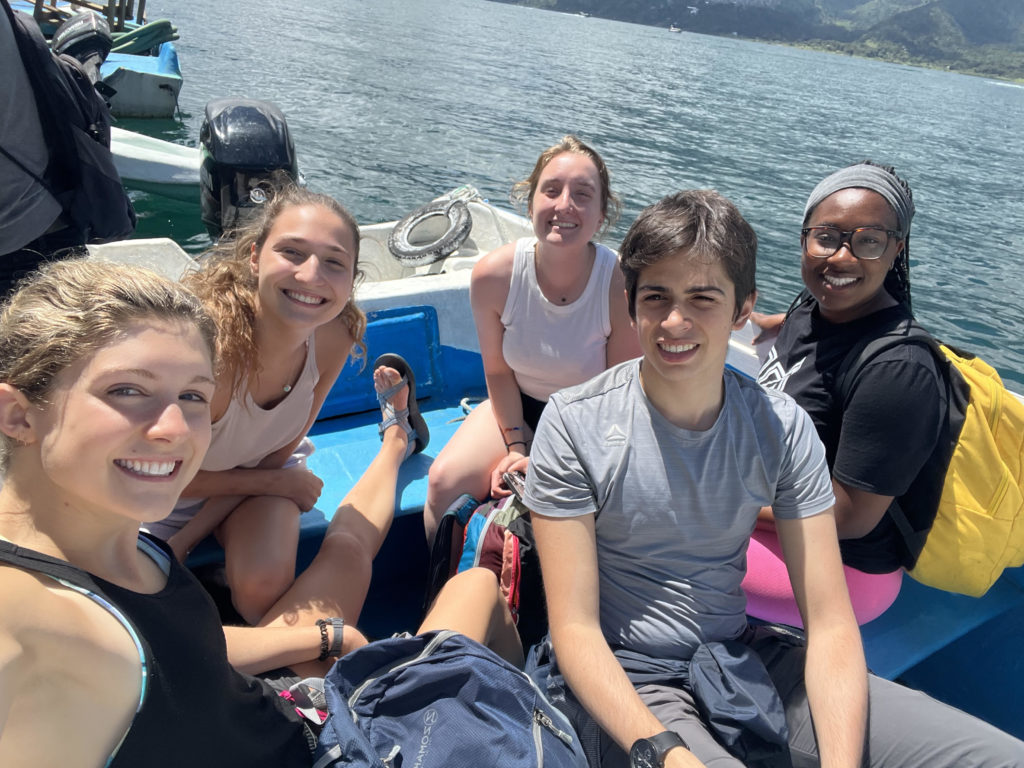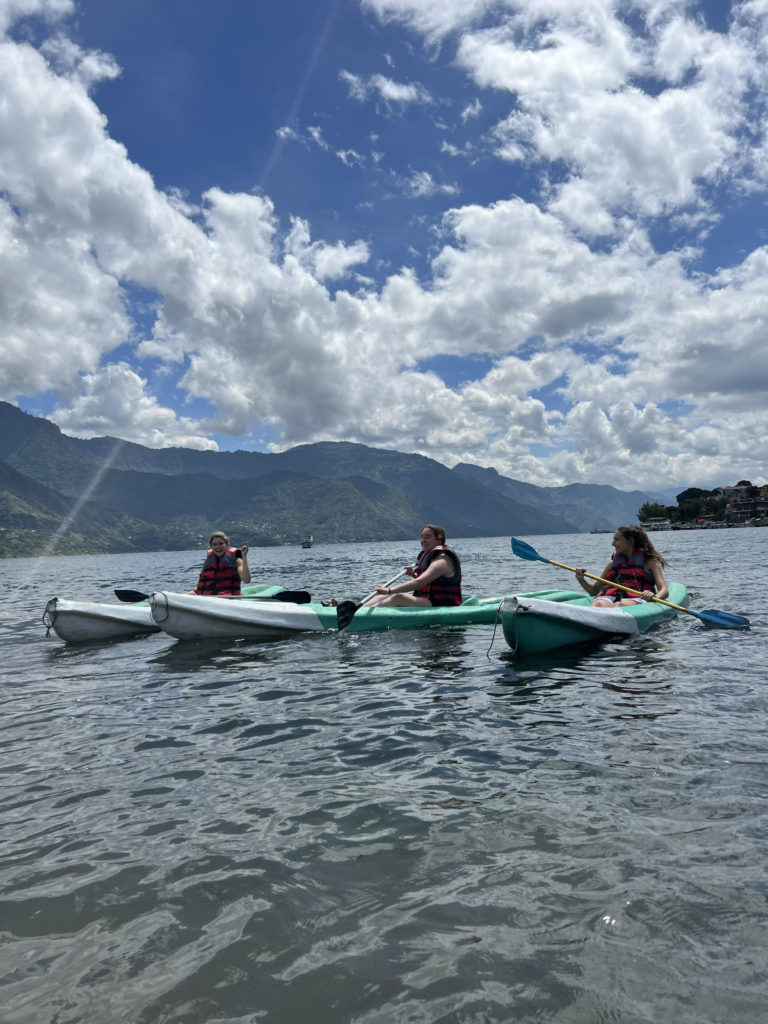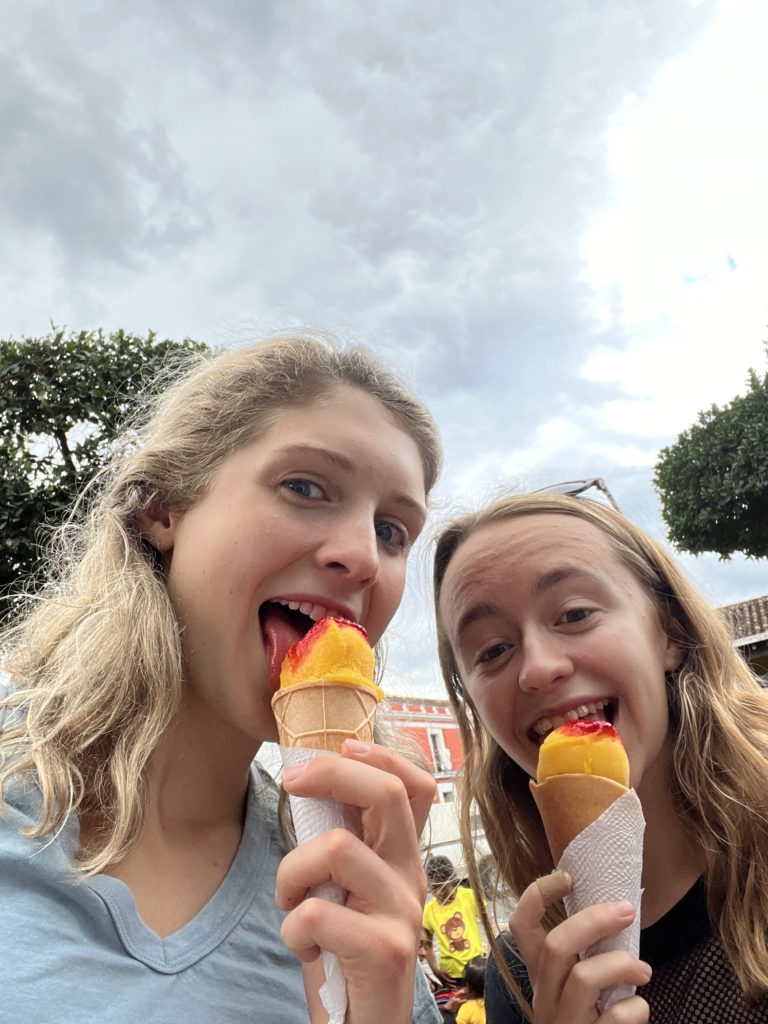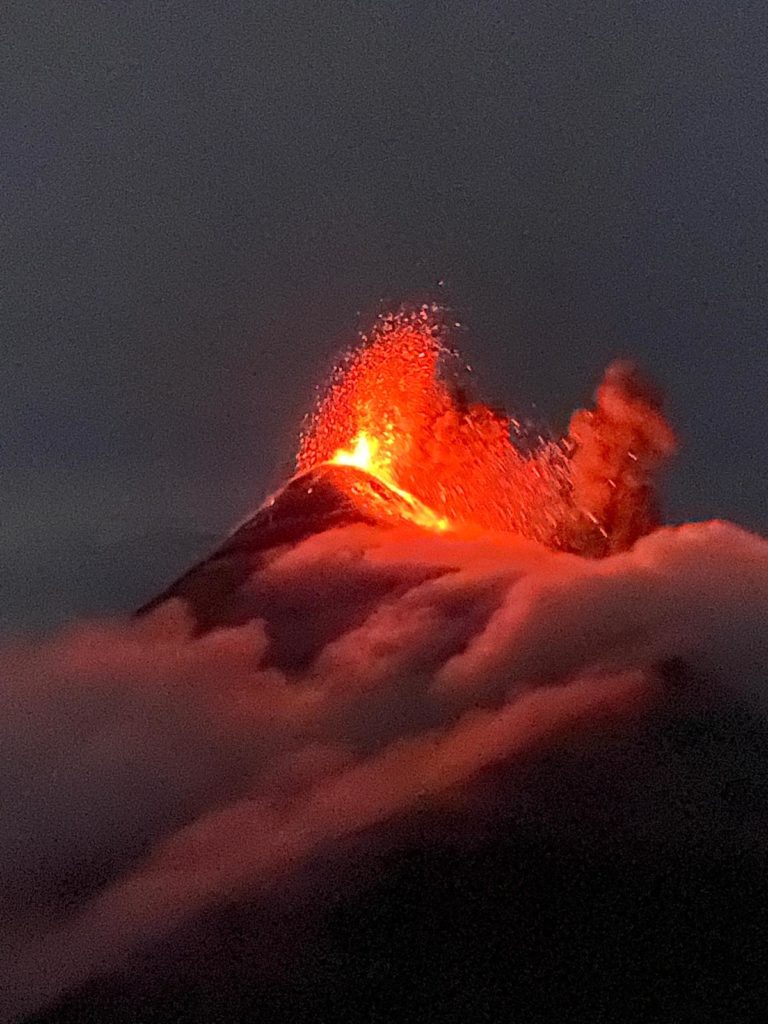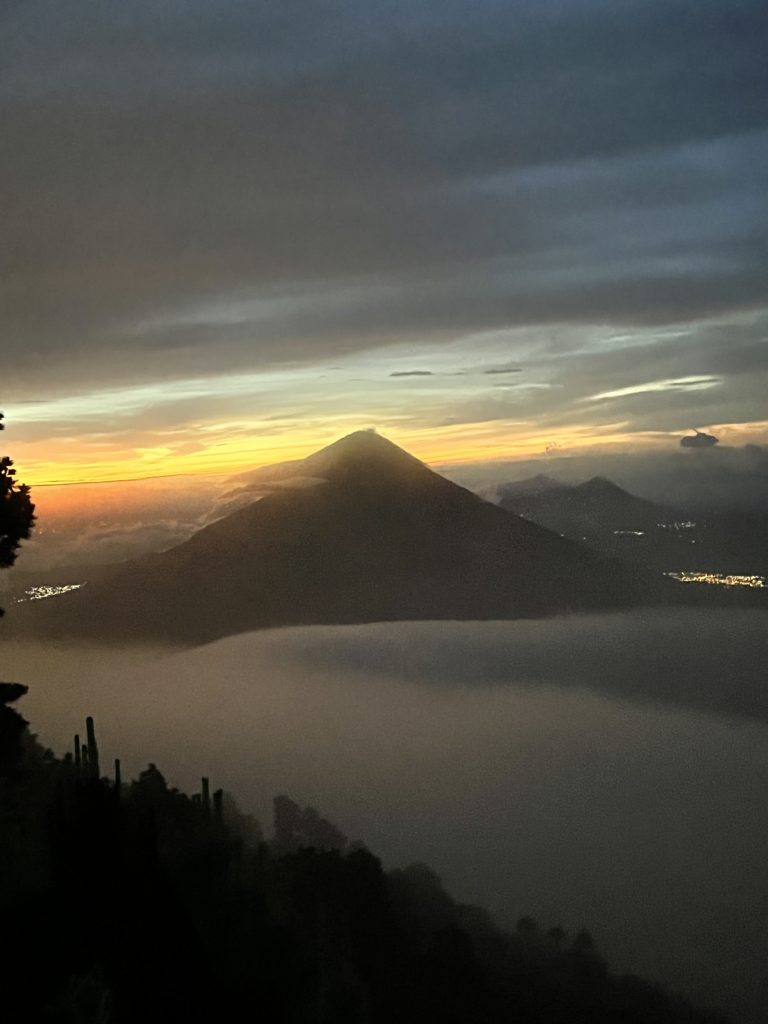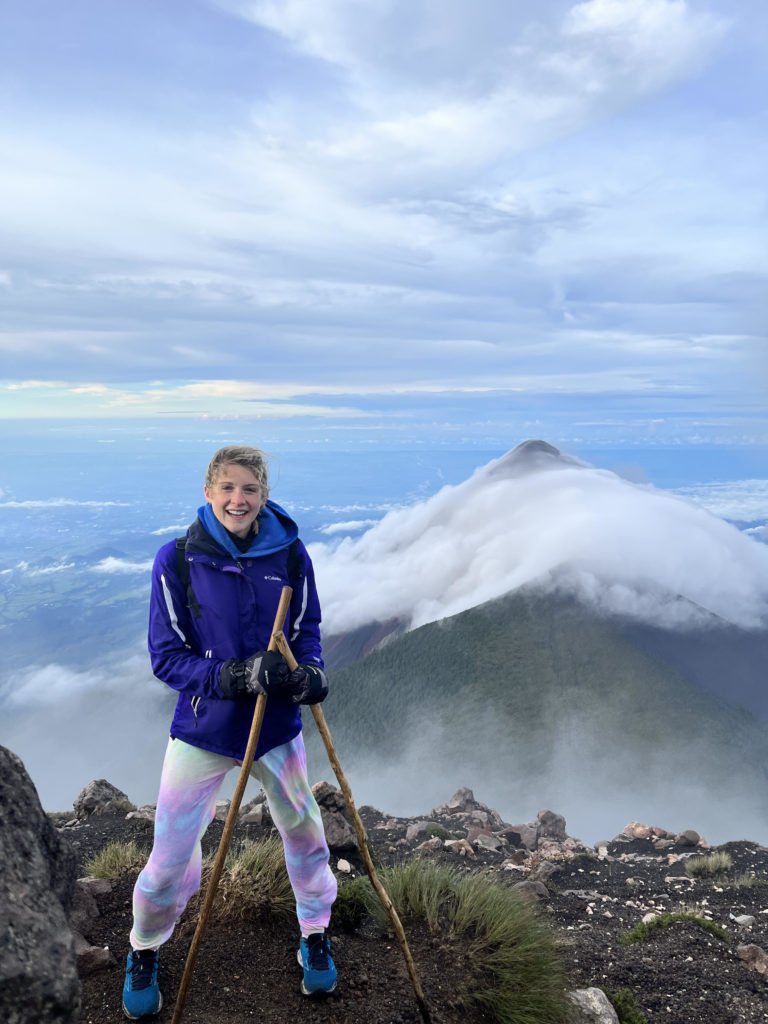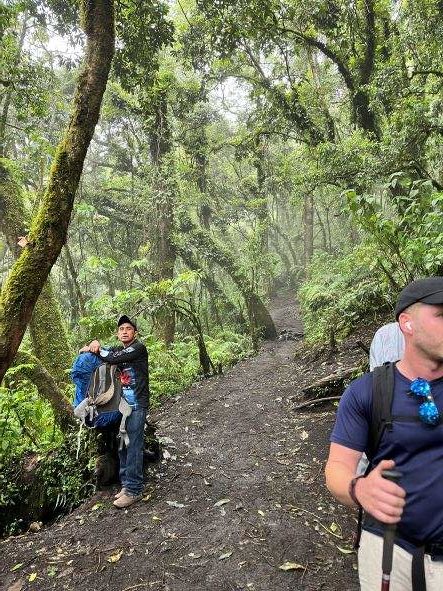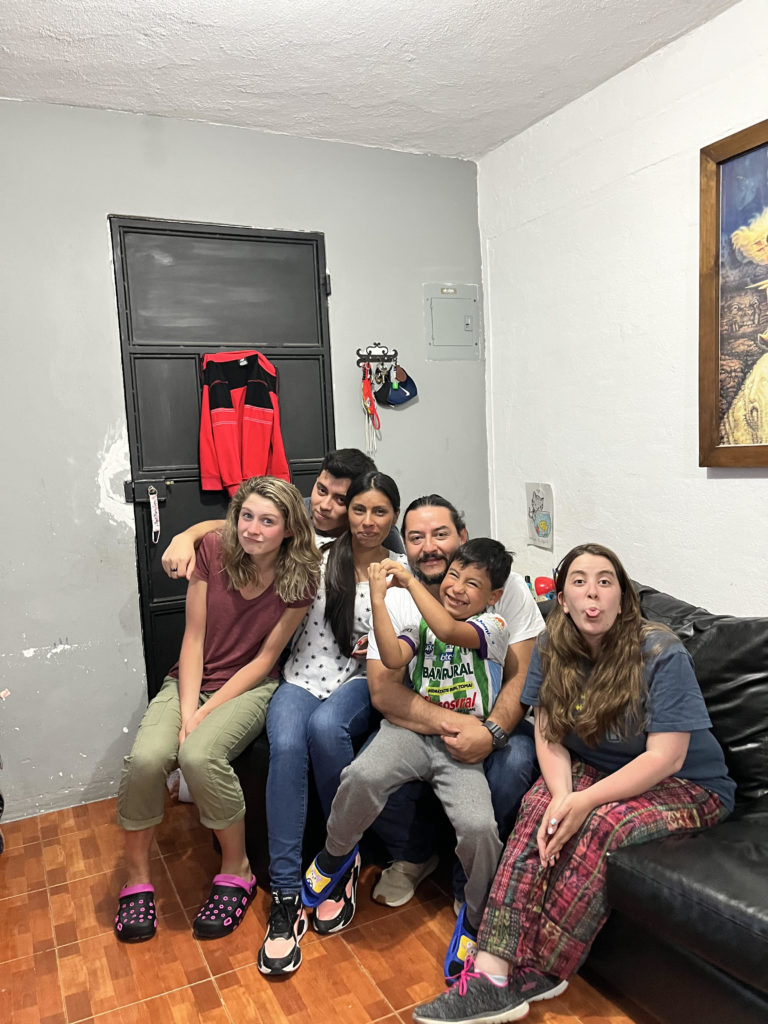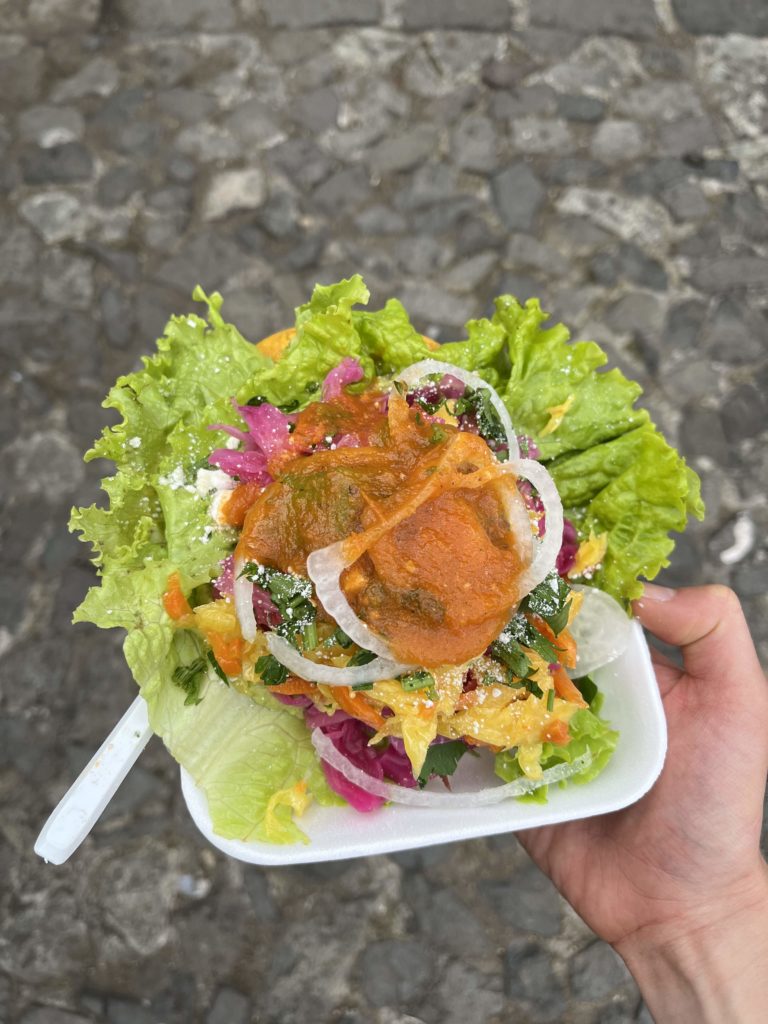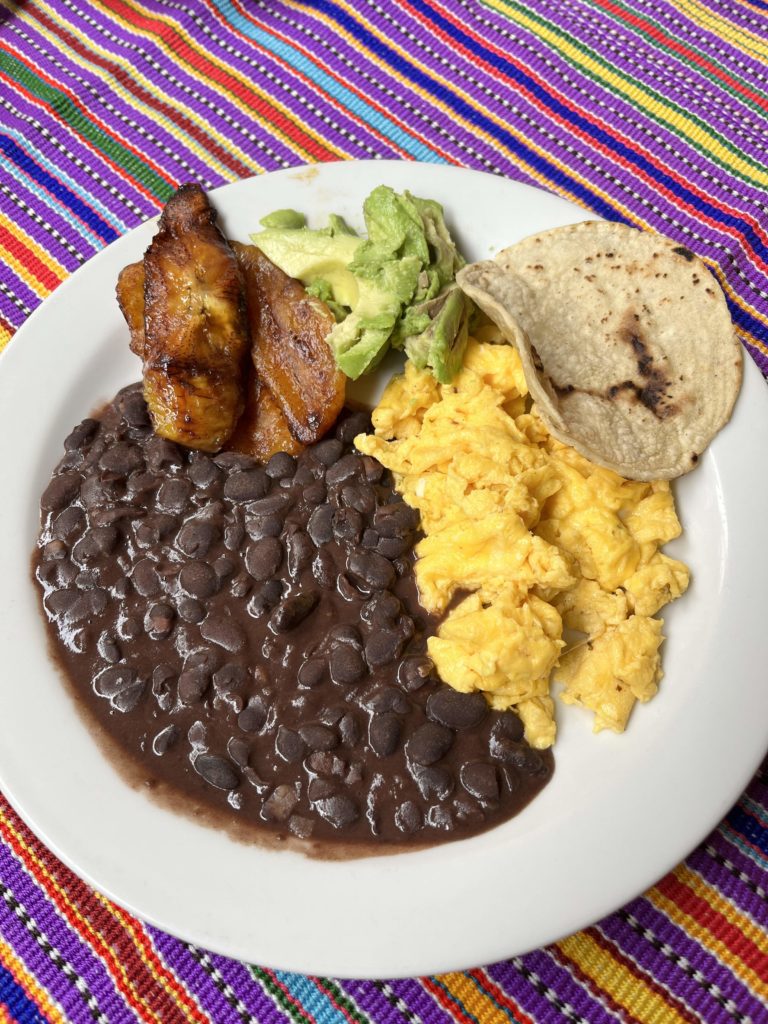Hola, queridos amigos,
This past week, we had a canícula, which can be (very) loosely translated to the English phrase, “the dog days of summer,” and is a period in the rainy season in which the weather is similar to the summer months of November, December, and January. It was sunny, hot, and dry, which was a breath of relief from the constant rain we experience here. I tried to get my fill of the sun during the week, because I knew that it was not going to last very long. Alas, the canícula is over now, but I am grateful for the time I did have in the sun. I am particularly lucky that I was able to spend even more time in the sun during these past two weekends at the beach and Lake Atitlan. The beach was incredible, especially since it was the third time in my life seeing the ocean. I loved walking along the beach, “swimming in,” i.e., being pushed around by, the waves, and finding different treasures on the shore. I am still finding black sand–black because of volcanic processes that occurred thousands of years ago–in some of my things.
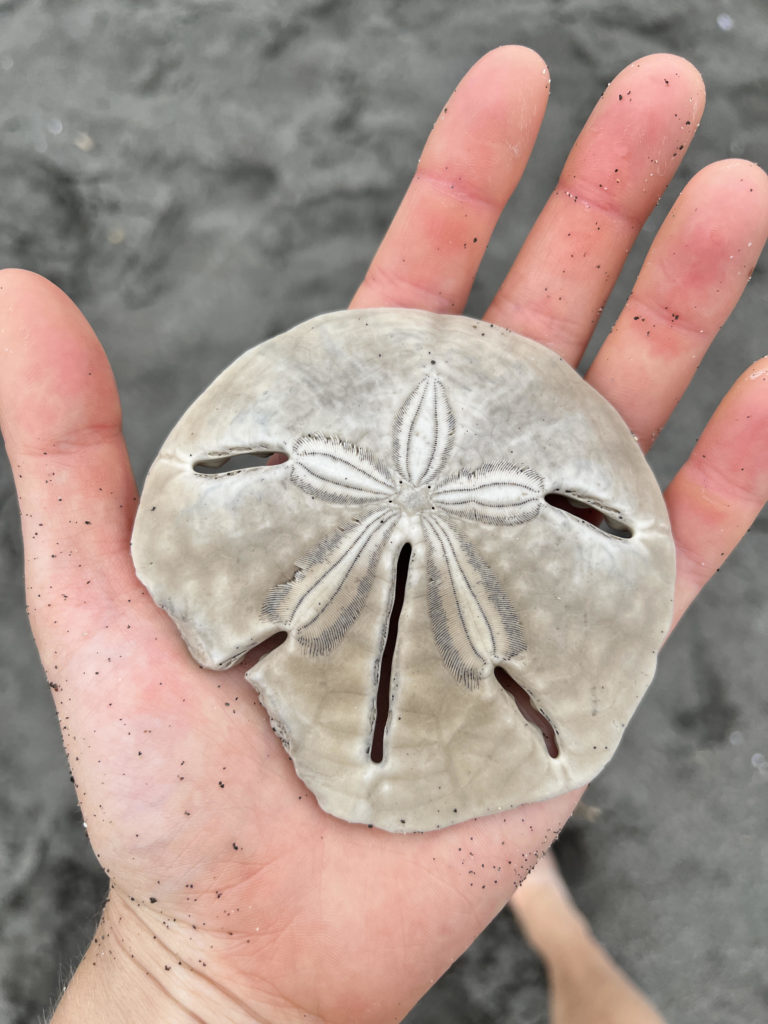
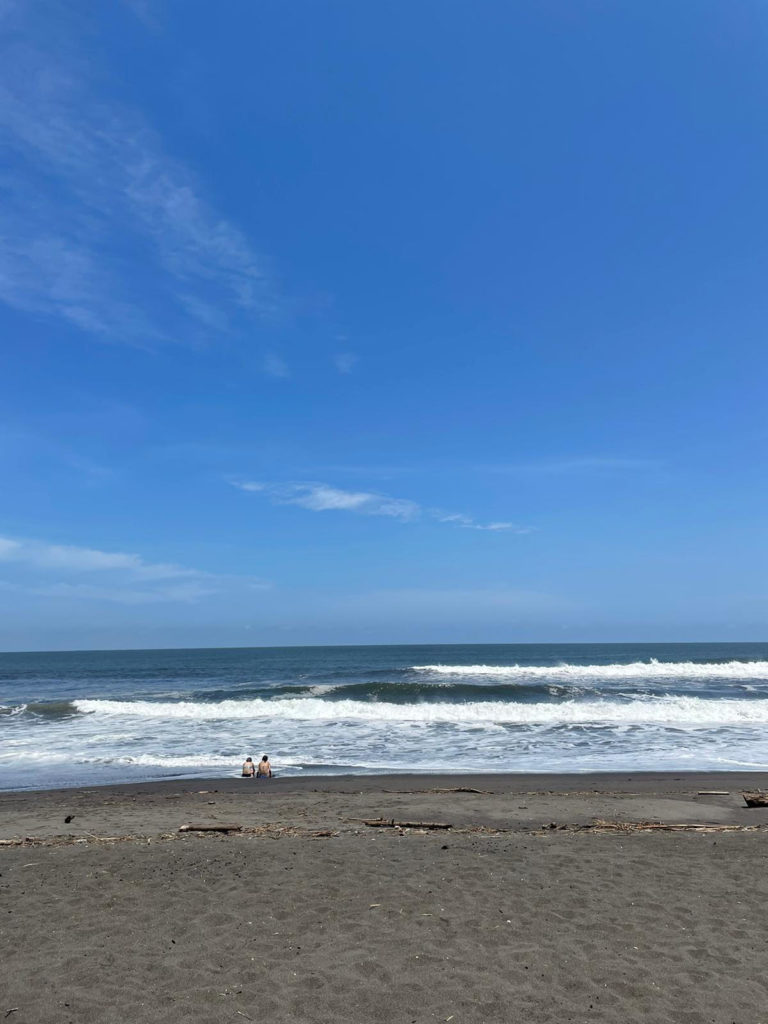
This past weekend, I once again visited Lake Atitlan, this time with an entirely different group. We stayed from Friday night to Sunday morning and spent our time swimming, kayaking, hiking, and swinging in hammocks. I once again have a stomachache from the polluted water, but I do not regret choosing to enjoy my time at the lake instead of sitting on the sidelines. The stomachache will pass, but I may never have another opportunity to swim in one of the most beautiful places I have ever seen.

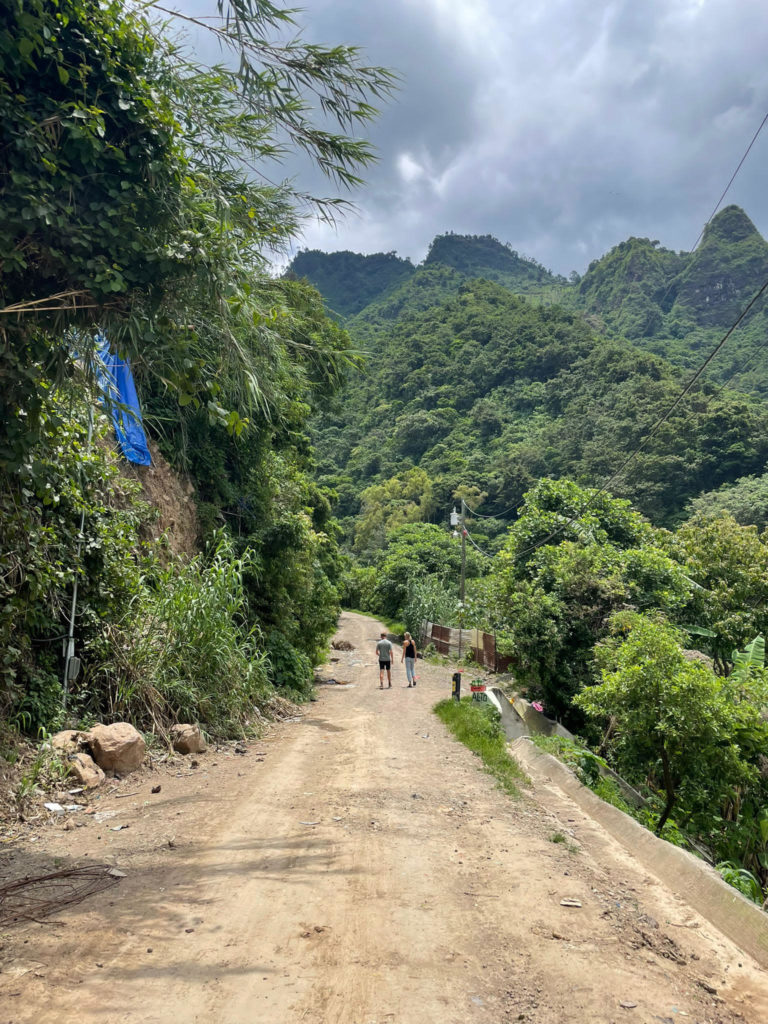
I now want to tell you about the quetzal (kets-all), the Guatemalan currency named after the national bird. The exchange rate of quetzales to dollars is 7.5 to 1, which means that everything here is a lot cheaper for me. For example, at a local panderia that is on the way to my school, I can buy a croissant, muffin, or cinnamon roll for 4 quetzales. I’m no mathematician, but I believe that a 4Q croissant translates to a 53 cent croissant. The total cost of my first kayaking trip–including the transportation of the shuttles and boats, the food, and renting the kayaks– was around 550Q, which translates to about 73 dollars. In my mind, that is pretty cheap compared to what it would be in the States. Or again, this past weekend, I stayed at a hostel and ate 6 meals there, which came out to 31 dollars in total. Other nice parts about paying here is that the tip is always included in the price, and the prices are always whole numbers, so I never have to worry about change. It’s all very simple. And cheap. It is so easy, it may even be dangerous, because I feel like I have license to spend a lot more than I normally would in the States.
Speaking of money, I’ve done some haggling here, which is apparently expected when you go shopping in the mercados. It’s a pretty thrilling experience. The key is to stay calm and firm when you offer a lower price, and to stick with the price until the seller lowers his. A friend here told me that he never accepts the initial price of anything offered here because he knows that sellers, especially when they see gringos, make the price higher than it should be and can therefore be talked down from the starting ask. Haggling makes me feel like I’m really living in Guatemala and not just visiting, just like when I bought a Guatemalan newspaper for 3Q and read it to practice my Spanish. Well, I suppose I am still reading it. My Spanish is not so good that I can read a newspaper in a day–at least, not yet.
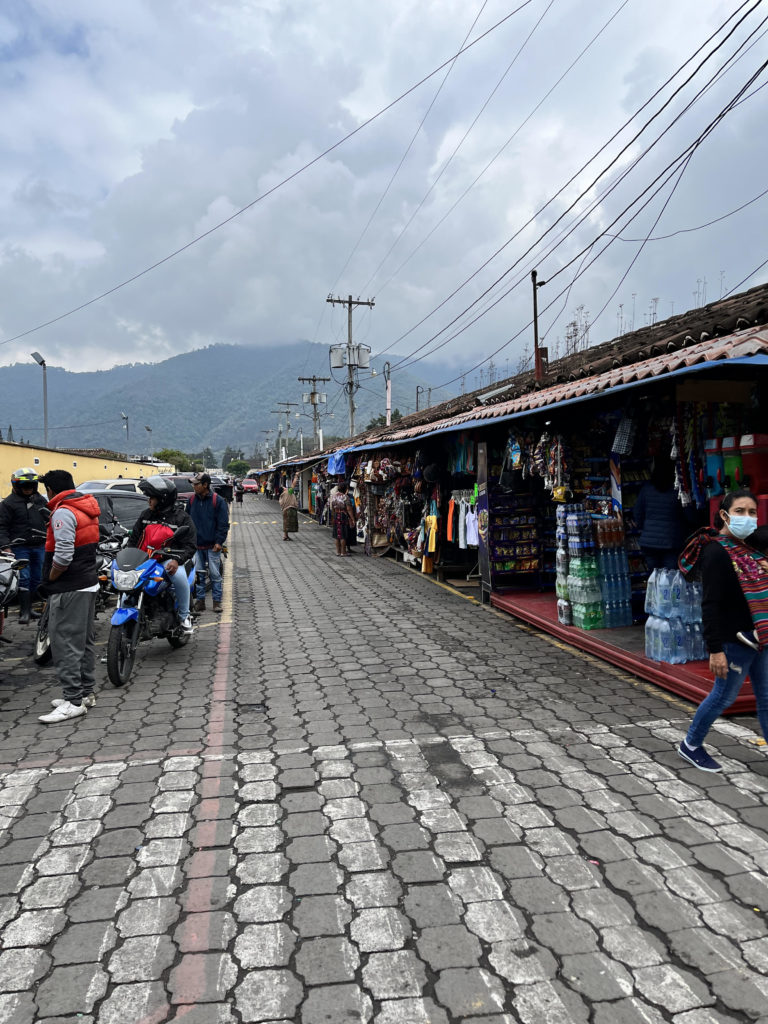
I do really feel that my Spanish is improving. I had an entire conversation with a (slightly drunk) Guatemalan at my hostel this past weekend. Maybe because we were talking about basic topics, such as places I need to visit in Guatemala or how much he loves to dance, or maybe because he was slightly drunk and so kept repeating himself, was the conversation easy to follow. But I like to think that it was also because my ear and command of the language has improved. In fact, I have noticed this improvement not just when I talk to slightly drunk men but also when I talk to completely sober waitresses, tour guides, shop owners, teachers at the school, or my host family. (Don’t worry Mom, I am not in the habit of talking to drunk men.) I am excited by the small growth I am seeing and am eager to improve even more. I know that I need to practice all the time, and thankfully, the other students with whom I live feel the same way. My Dutch friend and housemate Thomas and I have made an agreement that during the week we are only going to talk Spanish with each other. If one of us lapses into English, we have to pay 10Q to the other person. At the end of my time here (he stays for a few more weeks after I leave), we will go out to dinner and pay with the money we owe each other. I am hoping that the dinner is at a cheap street vendor and not a nice restaurant.
And now, for the food I have eaten here! First off, there is a slight correction I need to make to my last post. I said that enchiladas guatemaltecas are also known as tostadas, but that is false. They are made with tostadas, which are the crispy tortillas that serve as the base of the dish.
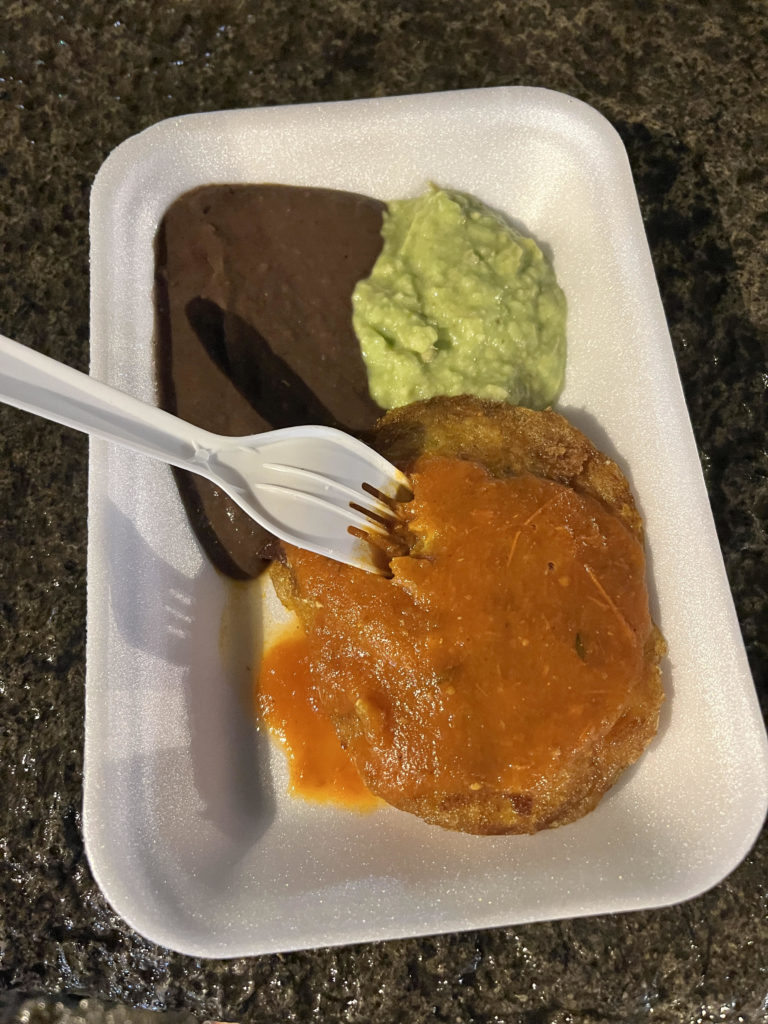
Chiles Rellenos: This is a common dish in Mexico as well, though I believe it is more common there to make the dish with chiles picantes rather than chiles pimientos. My chile relleno was not too spicy–making me think it was made with a chile pimiento–and it was filled with meat and vegetables, and then covered in whipped egg whites and fried. I paired it with the creamiest, thickest horchata I have ever had it my life. It was incredible, especially since it accompanied the spicy and savory chile relleno.
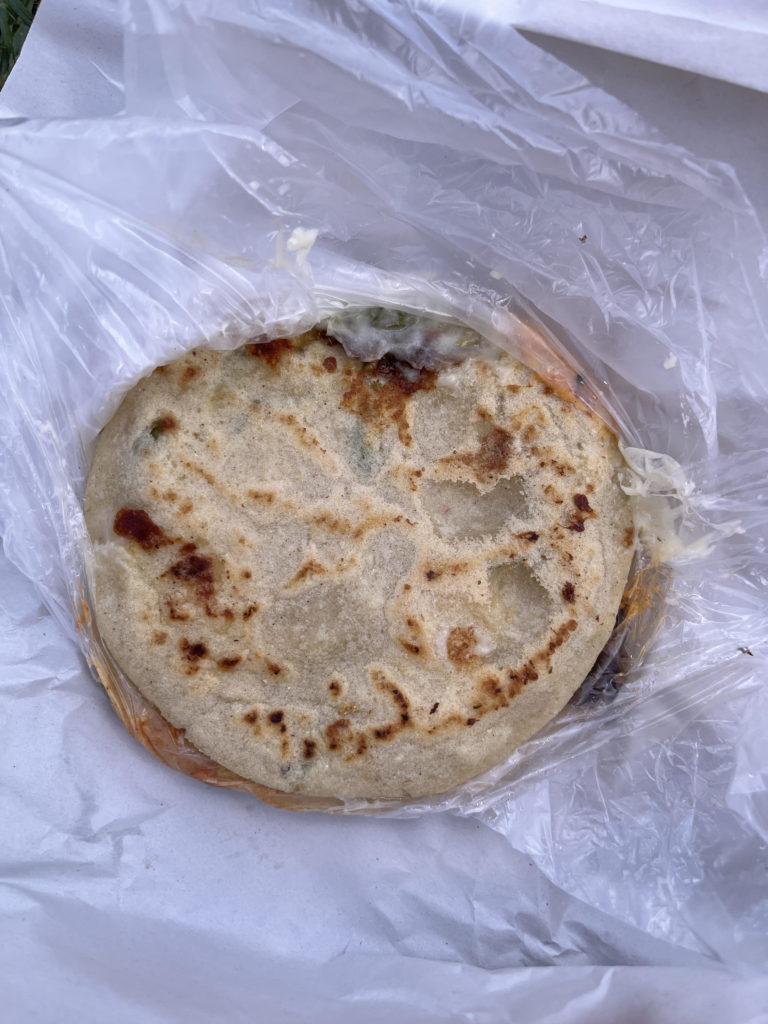
Pupusas: these are amazing!! They are disks of corn flour filled with cheese, meats, vegetables, and whatever else and are then fried on the stove. I chose to have one pupusa with queso and loroco (a popular edible flower used in Guatemalan cuisine) and one with El Pastor, pineapple, onion, and cilantro. On the topic of cilantro, you will be happy to know that, after much force-feeding myself the dishes with cilantro, I am less repulsed by it and can even tolerate it. This is a big deal for me, considering that 1) I have hated cilantro with a passion all my life, and 2) many Guatemalan dishes include large amounts of cilantro. It is still not my favorite, but I can now eat a dish with cilantro without having a visceral reaction. I do not even try to avoid it. It’s amazing all the ways I have grown during my time here.
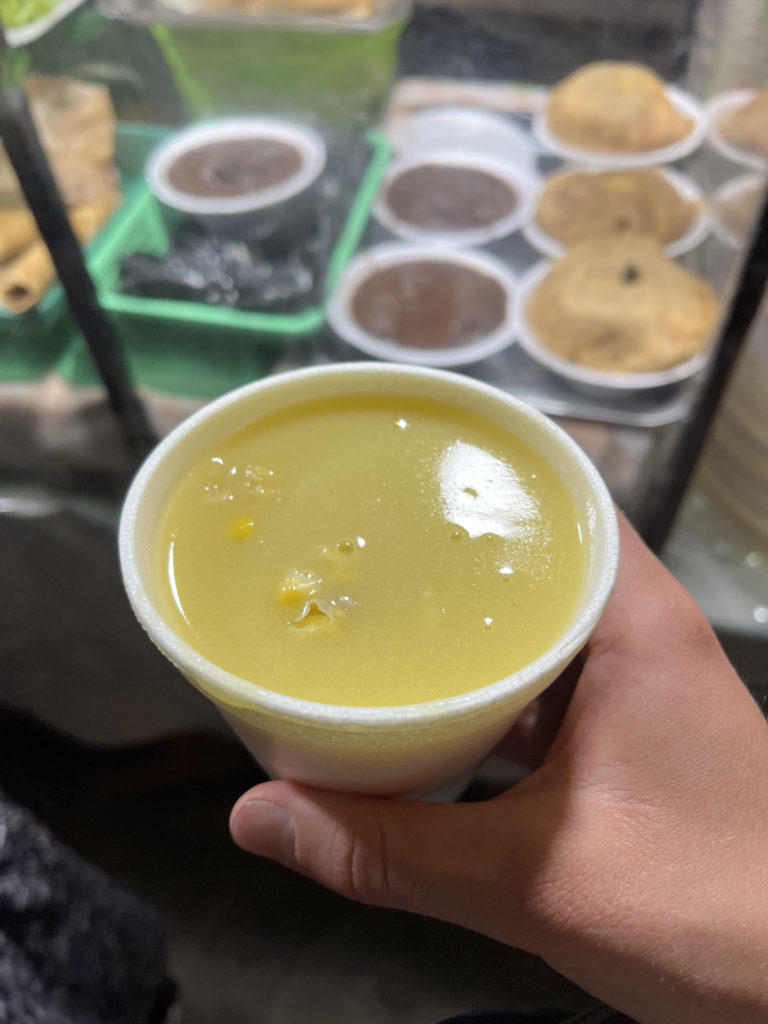
Atol (de elote, con arroz y chocolate o leche): this is a thick, hot drink commonly had for breakfast or in the evening. The flavor of elote is the most traditional flavor (and also my favorite flavor–I really enjoyed the sweetness from the corn, and it was not as overpoweringly sweet as the chocolate flavor), though the other flavors are also common. The flavor I have yet to try–and am most hesitant to try–is the atol blanco: savory and white, with beans floating in it and served with chili powder, it does not sound like a very appealing bebida. We’ll see if I ever get up the courage to try it.
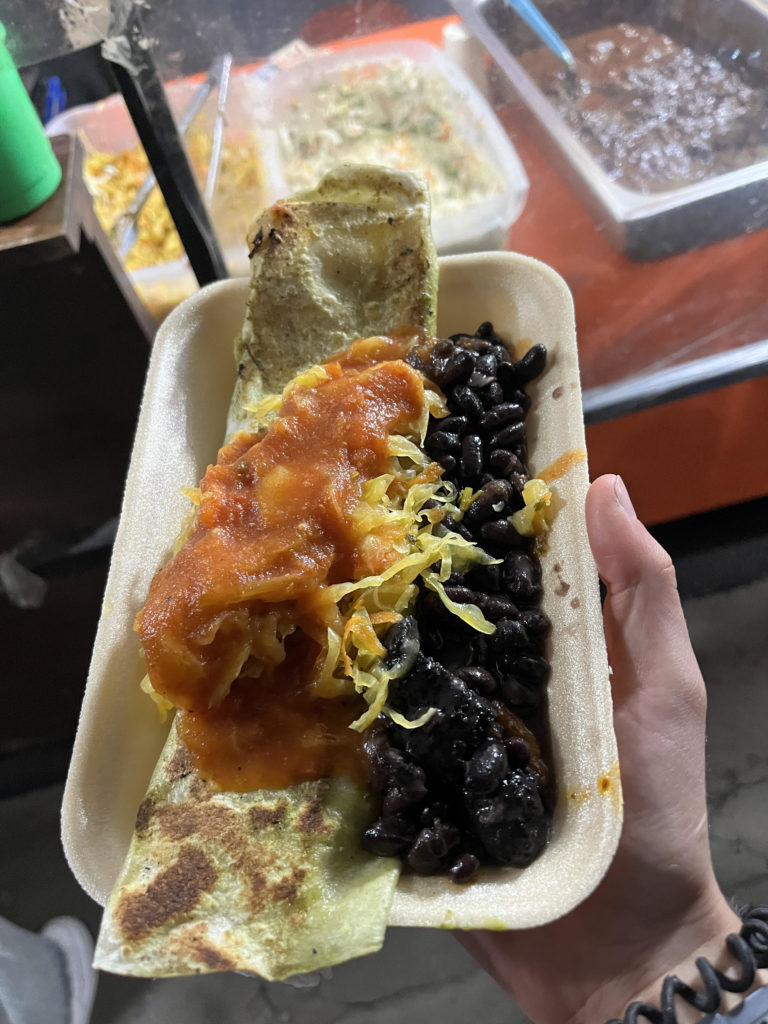
Chalupas: my understanding of this street food is that it is a mix of a quesadilla, taco, and burrito. It is a tortilla filled with meat, cheese, and vegetables, rolled up, and then fried like a quesadilla. I had mine filled with an amazing pork that I have only found at the one late-night street vendor we visited. Just like the rest of the cuisine here, it was served with frijoles.
Finally, I want to end on a more serious note. Last Friday, my teacher told me about the civil war that existed for 36 years in Guatemala and ended in 1996. The end of the civil war was so significant that, although Guatemala received its independence from Spain on September 15, 1921, the date that is engraved on the back of the quetzal is “29 de Diciembre de 1996,” and above this date is written paz, peace. On one side of the war was URNG (translated to “National Guatemalan Revolutionary Unit”), a leftist group often made up of campesinos (farmers/peasants), and on the other side was the government of Guatemala. An estimated 200,000 people died in the war, and 40,000 “disappeared,” a statistic just as horrifying as the deaths, if not more so. This civil war is considered the bloodiest cold war conflict to occur in Latin America, and after hearing some of the stories my teacher related, there is no doubt in my mind that this is the case. Although this history is difficult to learn about, it is immensely important that I do learn it. It has formed a country and people that I have truly grown to love. Guatemala is far from perfect, but I would not trade my time here for an experience in a first world country.
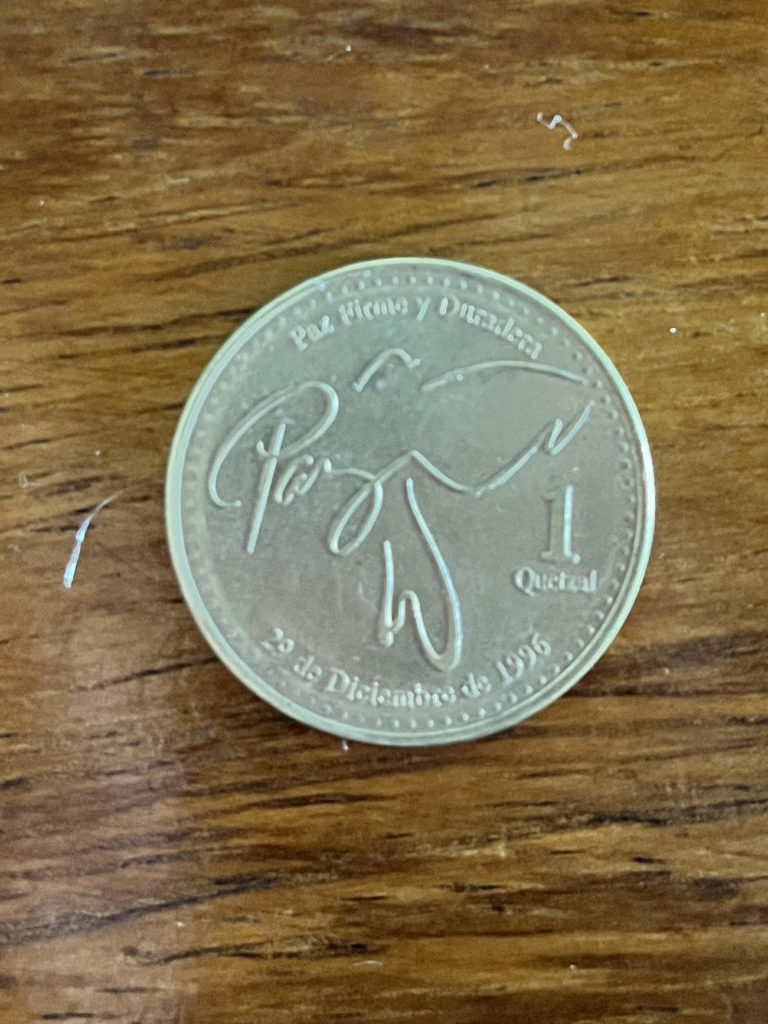
More pictures:
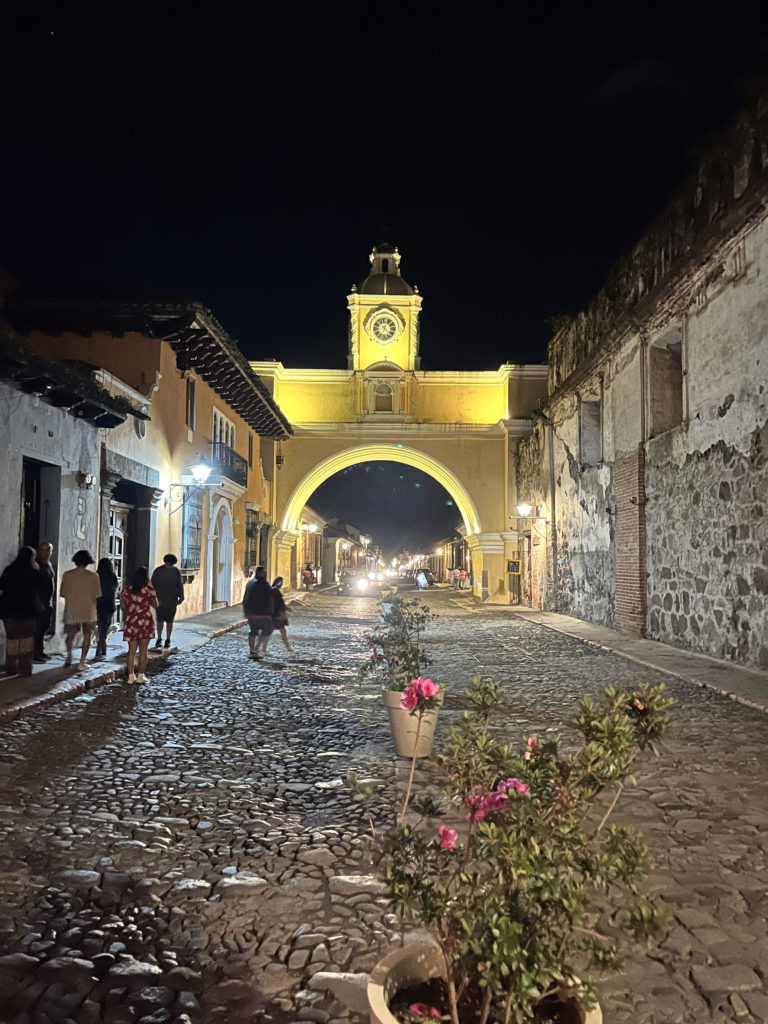
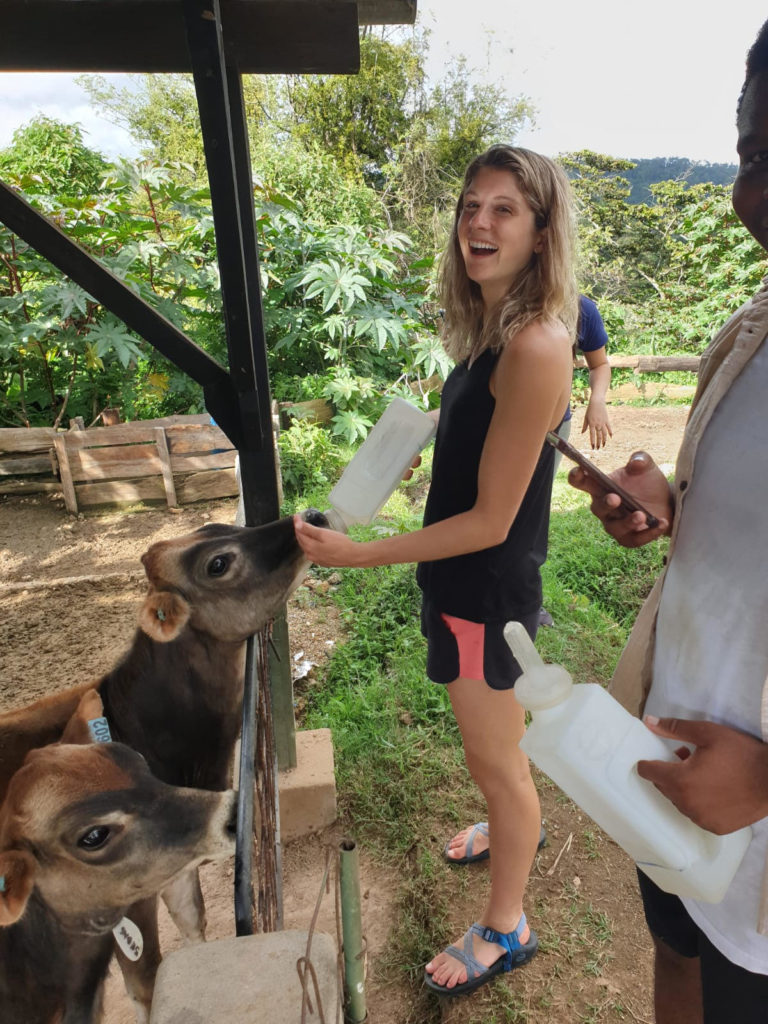
So far, three people in my house have gotten COVID during their time here, and the number of COVID patients is on the rise in Guatemala. I have been here a month already and so far have avoided it. Let’s hope my luck holds for another month!
Un abrazo,
Julieta
